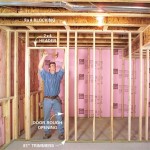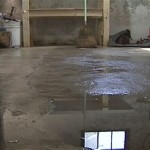Can You Convert a Crawl Space to a Basement?
A crawl space is a small, unconditioned area beneath a house, often used for storage or access to utilities. A basement, on the other hand, is a fully enclosed, typically finished, living space below ground level. While a crawl space and a basement are both located below the main living area, they differ significantly in their construction, purpose, and potential for conversion.
Converting a crawl space to a basement can be a complex and potentially costly endeavor. It's important to understand the feasibility of such a conversion and the various factors involved before embarking on this project.
Factors Affecting Feasibility
Several factors influence the feasibility of converting a crawl space to a basement. These factors can be categorized into structural, environmental, and legal considerations.
Structural Considerations
The first consideration is the foundation's structural integrity.
Foundation Type:
Converting a crawl space to a basement is not feasible for every foundation type. A slab foundation or a pier-and-beam foundation commonly used for crawl spaces may not be robust enough to support the added weight and stress of a basement. A full basement typically requires a foundation with thicker walls and a strong footing to withstand the soil pressure.
Soil Conditions:
The type of soil beneath the house is a crucial factor. Clay soil, which expands when wet and contracts when dry, can exert significant pressure on the walls of a basement. This can cause cracking and damage to the foundation.
Existing Crawl Space Dimensions:
The size and shape of the crawl space are also important. If the crawl space is too small, it may not be practical to convert it to a useable basement. There should be enough headroom and space for structural beams, utilities, and finishing.Environmental Considerations
The environmental conditions surrounding the crawl space can also impact the feasibility of conversion.
Moisture Levels:
Crawl spaces are often damp, due to water seepage from the ground or condensation. High moisture levels can lead to mold growth and wood rot, which can be harmful to health and structural integrity.
Water Table:
The height of the water table, the level at which groundwater sits, is also an important factor. If the water table is high, it can be challenging to dig a basement without encountering water seepage.Legal Considerations
Before beginning any conversion project, it's crucial to consult with local building codes and regulations.
Zoning Laws:
Local zoning regulations may restrict the size or purpose of basement spaces.
Building Permits:
Obtaining proper building permits is essential for any major construction project.
Inspections:
Building codes require qualified inspectors to assess the project at various stages to ensure it meets safety standards.Key Considerations for Crawl Space-to-Basement Conversion
While converting a crawl space to a basement presents several challenges, it is not impossible. Some key considerations for such a project include:
1. Professional Assessment
Before making any decisions, it's essential to consult with a qualified structural engineer and a licensed contractor. They can assess the foundation, soil conditions, and overall feasibility of the project.
2. Excavation and Foundation Reinforcement
If the conversion is deemed feasible, excavation will be necessary to create the basement space. This may involve digging out the existing crawl space and installing a new foundation to meet the requirements of a basement. The existing foundation may need reinforcement or complete replacement.
3. Drainage and Waterproofing
Proper drainage and waterproofing are crucial for a basement. A drainage system is needed to collect and divert water away from the foundation, while waterproofing helps prevent moisture intrusion.
4. Utilities and Finishing
Once the basement is constructed, utilities such as plumbing, electrical, and heating must be installed. The basement can then be finished with drywall, flooring, and lighting to create a comfortable and functional living space.
Converting a crawl space to a basement is a substantial undertaking. It requires careful planning, professional expertise, and a significant budget. This type of project should only be considered after a thorough evaluation of the feasibility and potential complications involved.

Converting Crawl Space To Basement Good Or Bad Mellowpine

Turning A Crawl Space Into Basement Read This First

Converting A Crawl Space To Basement Youtube

Can You Convert A Crawl Space Into Basement

Increase The Living Space Of Your House Bisson Expert

Turning A Crawl Space Into Basement Read This First

Castle Builds Crawl Space Basement Conversion Dig Out Services Denver

Crawlspaces 2 Basements Expertise Create Basement From Existing

How To Change Your Crawlspace Into A Basement

Convert Crawlspace To Basement Atlas Restoration







